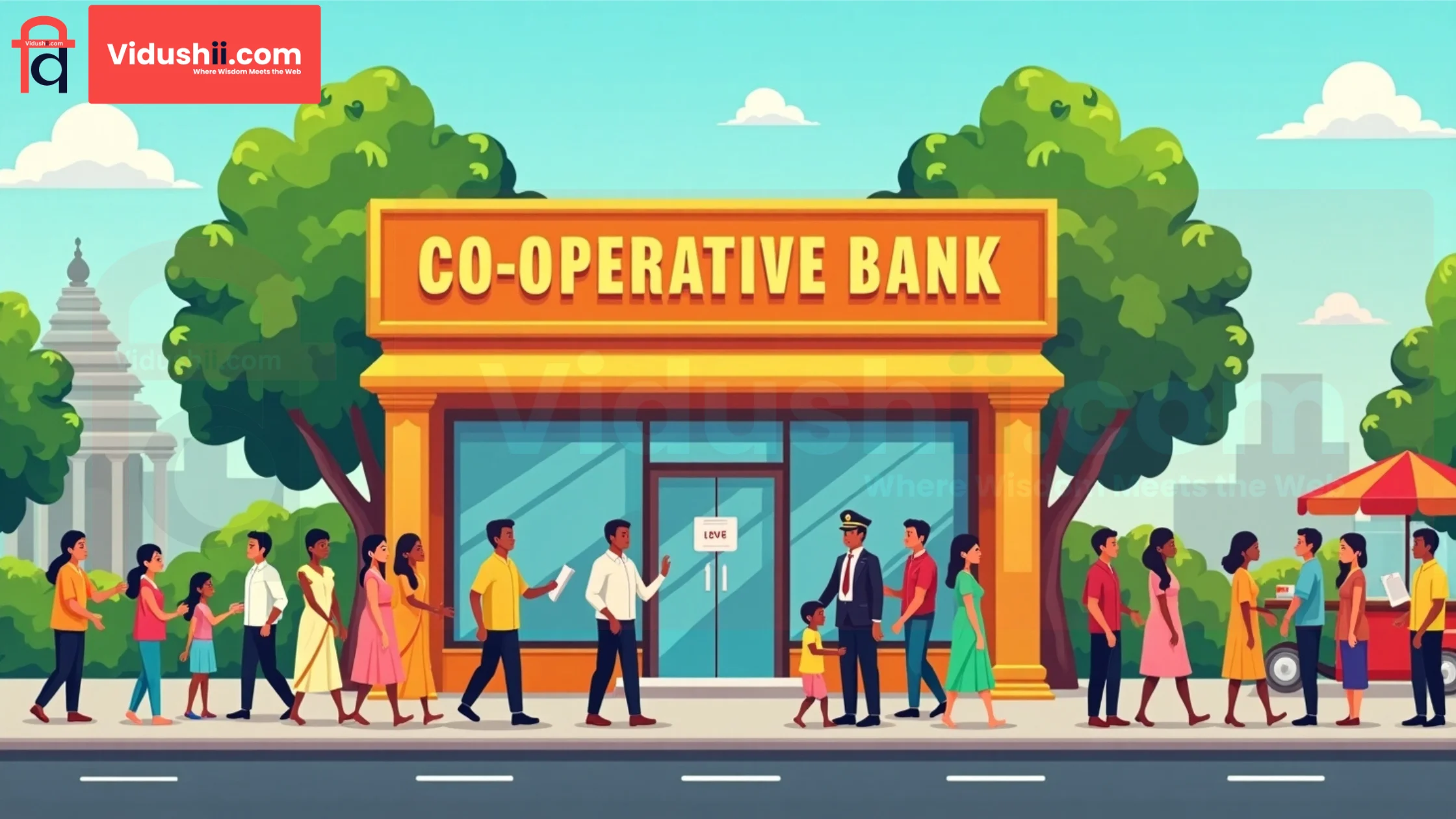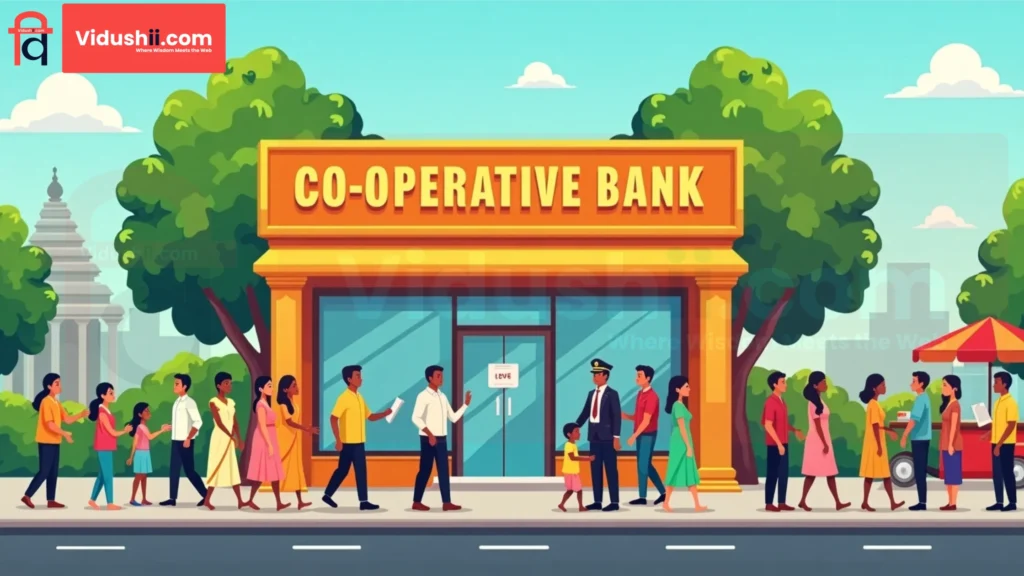
Cooperative banks in India play a crucial role in the country’s financial landscape. These banks are more than just financial institutions; they are also symbols of collaboration, mutual support, and collective growth. These banks, particularly in rural and semi-urban regions, play an important role in fostering financial inclusion and boosting the local economy. Let us go further into the world of cooperative banks in India, learning about their structure, importance, and the leading cooperative banks in India.
Cooperative Banks In India | Their History and Importance
Cooperative banks are such financial institutions whose ownership and operation are done by their members only. Their basic principle is based on “one member, one vote”, irrespective of the share capital of any member. Their main aim is not to earn profit but to provide affordable banking and financial services to their members.
Cooperative Banks In India originated at the end of the 19th century. Anyonya Sahakari Mandali, India’s first cooperative credit union, was founded in Baroda province in 1889. However, this movement gained significant traction following the passage of the Cooperative Credit Societies Act in 1904. Since then, these banks have made important contributions to the Indian banking system.

Their importance of Cooperative Banks In India lies in the fact that they provide banking services to people whom commercial banks cannot easily reach. They provide loans to small farmers, artisans, and small-scale industries, promoting economic growth at the grassroots level.
How Many Types of Cooperative Banks in India?
It’s interesting to learn about the number of Cooperative banks in India. The cooperative banking sector in India is huge and varied. According to the most recent data, the structure and number of Cooperative banks in India are as follows.
- Urban Cooperative Banks (UCBs): India has over 1,500 scheduled and unscheduled UCBs, resulting in over 11,000 branches. According to another source, the figure is 1,527.
- Rural Cooperative Banks: The rural cooperative credit structure is divided into two major parts:
- Short-term Structure: It comprises 33 State Cooperative Banks (SCBs), 328 District Central Cooperative Banks (DCCBs), and approximately 88,891 Primary Agricultural Credit Societies (PACSs). According to data from 2021, India’s total number of rural cooperative banks was 97,006.
- Long-term Structure: It meets farmer’s long-term loan needs through State Cooperative Agriculture and Rural Development Banks (SCARDBs) and Primary Cooperative Agriculture and Rural Development Banks (PCARDBs).
The broad network demonstrates the nationwide reach and significance of cooperative banks in India, which are found in every corner of the nation.
You can also read best savings account interest rates india 2025, In this article we have given the all the information about saving accounts in India so you can share this knowladge with your loved once.
What is the structure of cooperative banks in India?
Cooperative banks in India are generally divided into two categories: urban and rural.
- UCB: Urban cooperative banks (UCBs) work in urban and semi-urban areas. Cooperative banks offer many services similar to commercial banks, such as deposit taking, loan disbursement, and locker facilities. They primarily serve the needs of small businesses, self-employed individuals, and the middle class.
- RCB: Rural cooperative banks are the backbone of rural India, providing loans for agriculture. Their structure is three-tiered (teen-stariya).
- State Cooperative Banks (StCBs): These are the most powerful bodies at the state level. These serve as a link between DCCBs and the RBI/NABARD.
- District Central Cooperative Banks (DCCBs), These operate at the district level, collecting funds from StCBs and distributing them to PACS.
- Primary Agricultural Credit Societies (PACSs) operate at the village level, providing loans to small farmers and members.
Top 10 Cooperative Banks in India
Many cooperative banks in India have performed brilliantly and have won the trust of their members. Here is a cooperative bank list of the top 10 cooperative banks in India, which are known for their services, network, and financial strength:
- Saraswat Cooperative Bank Ltd.: This is India’s largest Urban Cooperative Bank, with its network spanning Maharashtra, Goa, Gujarat, Delhi, Madhya Pradesh, and Karnataka.
- Cosmos Cooperative Bank Ltd.: Based in Pune, this bank is one of India’s top UCBs and has branches across the country.
- Shamrao Vithal Cooperative Bank (SVC Bank): This bank, which is more than 100 years old, is known for its customer-friendly services.
- Bharat Cooperative Bank (Mumbai) Ltd.: It is a multi-state scheduled cooperative bank with strong business and presence.
- TJSB Sahakari Bank Ltd.: Started in Thane, this bank is now a well-known name in Maharashtra and outside it.
- Abhyudaya Cooperative Bank Ltd.: This bank is also Mumbai-based and is known for its social commitment.
- NKGSB Cooperative Bank Ltd.: Another strong cooperative bank that provides modern banking facilities to its members.
- The Kalupur Commercial Cooperative Bank Ltd.: Ahmedabad-based, this bank is one of the leading cooperative banks in Gujarat.
- The Gujarat State Cooperative Bank Ltd.: It is the apex bank of the cooperative banking structure in Gujarat.
- Goa Urban Cooperative Bank Ltd.: This is a prominent cooperative bank of Goa, which contributes to the economy of the state.
Regulation and Future Outlook
Cooperative banks in India are subject to dual regulation. The Reserve Bank of India (RBI) oversees its banking functions, while the State Registrar of Cooperative Societies (RCS) or Central Registrar of Cooperative Societies (CRCS) handles their management and registration.
In terms of the future, these banks face several challenges, including competition from commercial banks, political interference in management, and a slow adoption of modern technology. However, the RBI has taken several steps to strengthen its governance and financial health. With digitalisation and improved governance, these banks can play an even greater role in the Indian economy, particularly in rural and semi-urban areas.
If you have any advice or see any errors in this article, please let us know.
We’ll happily address any issues and improve based on your input.
Email Us: info@vidushii.com
If you do not get the answer to your question, do not stress. Stress is a problem that affects everyone nowadays. If you’re feeling overwhelmed, don’t worry: meditation can help. Read our Meditation Kaise Kare article, specifically designed for someone dealing with stress.





